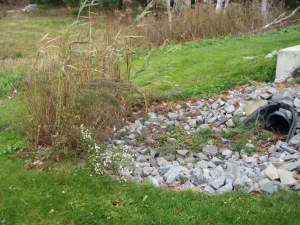I like to have a few flowers in a jar, sitting on my desk or on the kitchen table. Zinnias, clovers, roses, thistles, doesn’t matter what. On afternoon strolls I pick a few blossoms to stick into water when I get home.
But now, in mid-November, the options are narrowing. Hardly a flower left. Green leaves, yes, still quite a lot of photosynthesis going on. But the flowers’ work is done. The honeybees have packed it in for the year. The hummingbirds have split. The flowers have pretty much called it a day.
A few exceptions, though. Red clover is very frost hardy. So are dandelions. And among the last flowers to keep flying the flag are the asters. These little white flowers are well named. Aster—they’ve had that name for centuries. Stars.
Because aster means star, of course, from an ancient Greek word, astron. Astronaut, astrophysicist, astrology, asterisk, asteroid, astroturf (not sure how that one got in there??)
Asters make constellations in the parking lot.
There are hundreds of species of asters, a botanist’s nightmare. Their classification is much debated today, with DNA testing revealing new and unsuspected links and relationships between species. Also asters hybridize readily, so there are dozens of horticultural varieties, too. Let’s just call them asters.
For any last lingering moth, any desperate nectar-feeding beetle or wasp, any wandering flower lover, asters are just about the very last option.






Recent Comments